On an energy-sapping day at the MCG, David Warner showed he is by no means a spent force.
The 36-year-old gave us a reminder that there is more than a sprinkle of youth in him, as he jumped to the heavens not once but twice against South Africa.
Warner, whose name has dominated the headlines this summer, was the story as he was assisted from the field unbeaten on 200. The only thing that got the better of him was the heat.
Not even Anrich Nortje’s thunderbolts could get the better of Warner, who snapped a near three-year Test century drought in his 100th Test.
Warner’s 200 retired saw Australia take a 197-run lead into day three, as the home side finished day two 3-386. The in-form Travis Head will resume on 46 alongside Alex Carey (8) after, firstly, Warner and, secondly, Cameron Green (6) were forced to retire.

Steve Smith and David Warner rest during a drinks break during day two of the Second Test match at the MCG on December 27, 2022. Photo: Quinn Rooney/Getty Images
Earlier, Steve Smith fought through a testing spell from Marco Jansen and the flu to score 85 before misguiding an uppercut to gully to hand Nortje a well-earned wicket. Marnus Labuschagne, meanwhile, was run-out in ugly circumstances as he sacrificed himself early on day two.
For the tourists, Dean Elgar’s men have a long way back to have any hope of sending the series into a decider.
With the exception of Nortje and at times Lungi Ngidi and Jansen, his bowlers struggled to build pressure on a flat wicket and under a beating Melbourne sun.
Here are our talking points from day two of the Boxing Day Test.
Groundhog day for Proteas
South Africa’s attack was billed as one of the world’s best before landing on Australian shores.
It was thought that the Proteas were one of the few sides in international cricket that could take on Pat Cummins’ men. Indeed, the South Africans were second on the ICC Test Championship.
Not quite halfway through the series and South Africa are being shown up.
Their batsmen have proven inept against the fast and unrelenting Australian quicks while their bowling attack is struggling without the runs on the board.
The MCG wicket always looked a flat one.
Dean Elgar said as much when he said he was “surprised” they were asked to bat after Cummins won the toss.
But with another score of under 200, Kagiso Rabada looked downright frustrated as he attempted to unsettle Warner by bowling his short stuff. That’s just asking for trouble at the MCG.
Meanwhile, Keshav Maharaj came Down Under with a reputation of being a quality spinner.
Like many before him, he was treated with contempt as Smith, Warner and Head got on top of him early, forcing Elgar to spread the field.
Without a world-class spinner, the South African attack was one dimensional.
It was a shame because what Nortje offered was some of the best bowling from an overseas quick in years.
It was the same kind of bowling spell that Kemar Roach delivered when he first arrived on Australian shores and clocked Ricky Ponting.
Nortje regularly hit the 150km/h speed mark and it had Warner playing from the crease and with his hands. Warner was good enough to survive, but only just.
Captain gets it right not to send South Africa back in to bat on day two
Given Australia’s dominate position in the Test and the fact South Africa looked like toast late on day two, Cummins might well have considered sending the tourists back in to bat late on day two.
With a lead of more than 100 and quickly growing, Cummins, if he wanted, could well have gone in for the kill.
After being forced to field under the hot Australian sun, Cummins’ quicks would have fancied themselves of making one or two important blows late on Tuesday afternoon against a batting line-up who look ripe for the taking.
Nor are there any demons in the wicket either.
Ultimately, however, Cummins likely made the right call.
With conditions unlikely to change much, Cummins need not speed the game up any further. After all, Australia’s lead is 197 at stumps on day two.
Plus, two of his men, including Green, were forced from the field. Green went for scans after being struck on the index finger from a Nortje thunderbolt.
After a two-day Test in Brisbane, Cummins was right to bat through to stumps.
Labuschagne as much to blame as Warner for run out
The instant Marnus Labuschagne’s desperate dive was beaten by Anrich Nortje’s underarm at the stumps by a matter of millimetres to give South Africa a crucial early breakthrough at the MCG, social media lit up in almost universal condemnation of David Warner’s role in the disaster.
As you can see, selfishness was a common theme in the criticism, with the Fox Cricket commentators praising Labuschagne for taking the bullet and sacrificing himself to keep the milestone man at the crease.
‘The most selfless thing we’ve seen in a long time,” enthused Kerry O’Keeffe.
“Marnus saw out of the corner of his eye how committed David was. David thought about turning back and going to the danger end, yet Marnus said ‘I’ll go’, despite the plight being completely gone for him.”
No doubt Warner deserves his fair share of the blame for the mix-up – he showed a lack of awareness in how far Labuschagne had gone past the crease to make his ground for the orginal single, setting into motion the chain of events that saw the number one Test batter in the world run out.
However, while it might be unpopular, it’s worth noting that Labuschagne was hardly completely blameless in the drama. And given he’s now been run out five times in his Test career – more than anyone else in the game since he debuted in October 2018 – it’s becoming clear that there are a number of flaws in his work between the wickets.
Let’s start with ground zero for the fiasco: Warner turning, noticing the ball had gone into the deep, and sensing the possibility for an overthrow run.
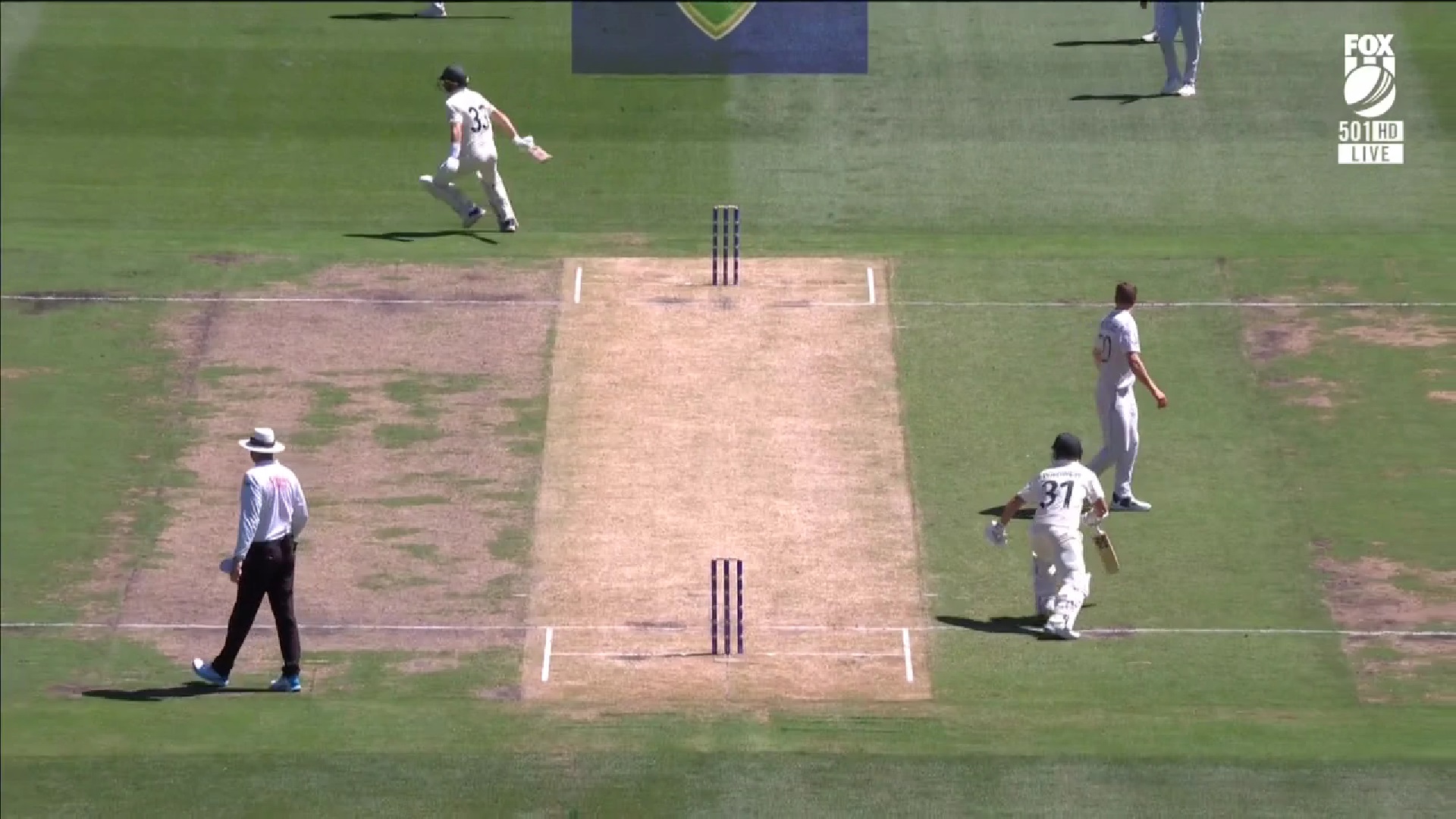
Image credit: Fox Cricket
Was there a run there? Well, we’ll get to that shortly, but this is where the ‘selfishness’ jibe is directed. How dare Warner take such a risk, and sell his teammate up the river, to try and steal an extra run.
However, it was Warner’s call, and he was going to what would have usually been the danger end for Keshav Maharaj’s throw coming in from backward point. Having not needed to put in a desperate sprint for his ground to carry him well past the crease, as Labuschagne had done, he backed himself to make the ground.
No doubt he thought as well that Marnus, despite having to run a few extra metres, could make his ground too, given the difficulty for Maharaj to get the ball quickly to Nortje at the non-striker’s end.
CLICK HERE for a seven-day free trial to watch cricket on KAYO
The next moment is where Labuschagne lands himself in trouble. A loud ‘No’ here puts the matter to bed; Warner hasn’t come down far enough that he can’t safely get back – the ball isn’t in Maharaj’s hands yet at any rate. If he assesses now that he won’t be able to make it, crisis can be averted.
Instead, he does the natural thing you do when your partner calls you for a run and it’s his call – he responds immediately, turns quickly, and starts running again.
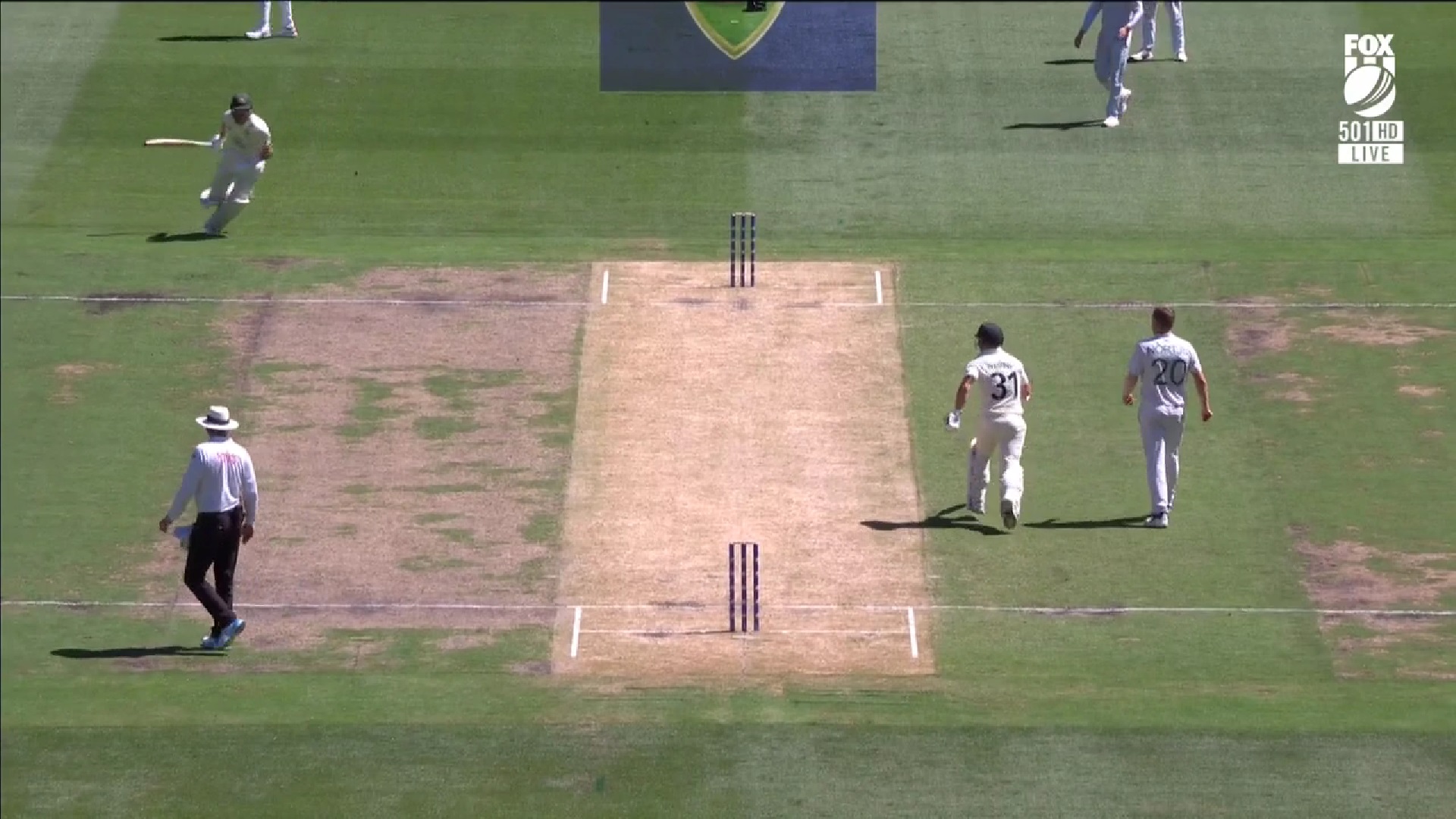
Image credit: Fox Cricket
So far, Marnus has done everything right. But next is where things start to go wrong.
It would be harsh to blame Labuschagne for this, but as he’s running, he turns his head to watch the ball. It’s only now, as he sees Maharaj pick up the ball, that he realises trouble may be afoot.
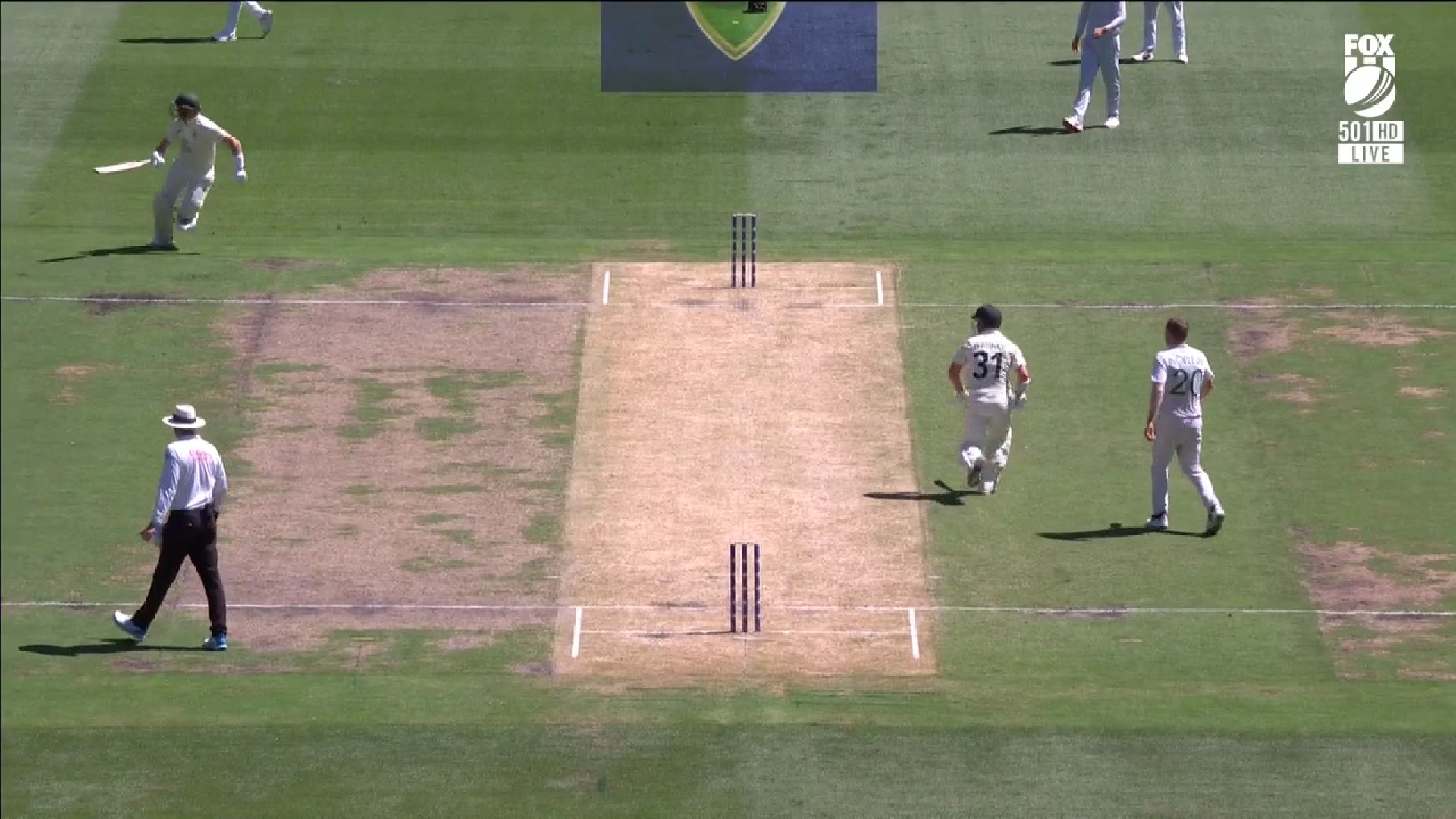
Image credit: Fox Cricket
So many run outs at every level of cricket are caused by players ball-watching; it slows you down, and importantly, takes your eyes off your partner. The very best pairs at international level trust the other implicitly, and can put their heads down and sprint for the other end confident in the knowledge that they’ll make it safely.
If you get the chance in the next few days, look at how Kane Williamson and Tom Latham run together for New Zealand, if indeed they get to the wicket at the same time in their Test against Pakistan. It’s underrated how well they work as a pair in that regard.
Not having that complete trust in Warner isn’t Labuschagne’s fault unless you’re a very hard marker, but it does lead to what happens next: he has a look, realises the trouble, stops, and only now calls ‘No’.
The problem is it’s happened too late: the pacy Warner is now three-quarters of the way to the striker’s end.

Image credit: Fox Cricket
Nortje senses a run out is on, and begins to move into the stumps. Labuschagne, meanwhile, has stopped dead. Warner has seen him start to run, thought it safe to continue on, but hasn’t considered that his partner might have trusted him at the start, but backed out once he took a look at Maharaj.
Up next is where Labuschagne makes his fatal mistake. A run out from here is a definite chance, but it still needs a decent throw to Nortje. But Marnus gives South Africa a crucial extra second: once he decides it’s him that needs to run rather than Warner, he turns his head and watches the ball again, rather than sprinting with all his might for the other end.
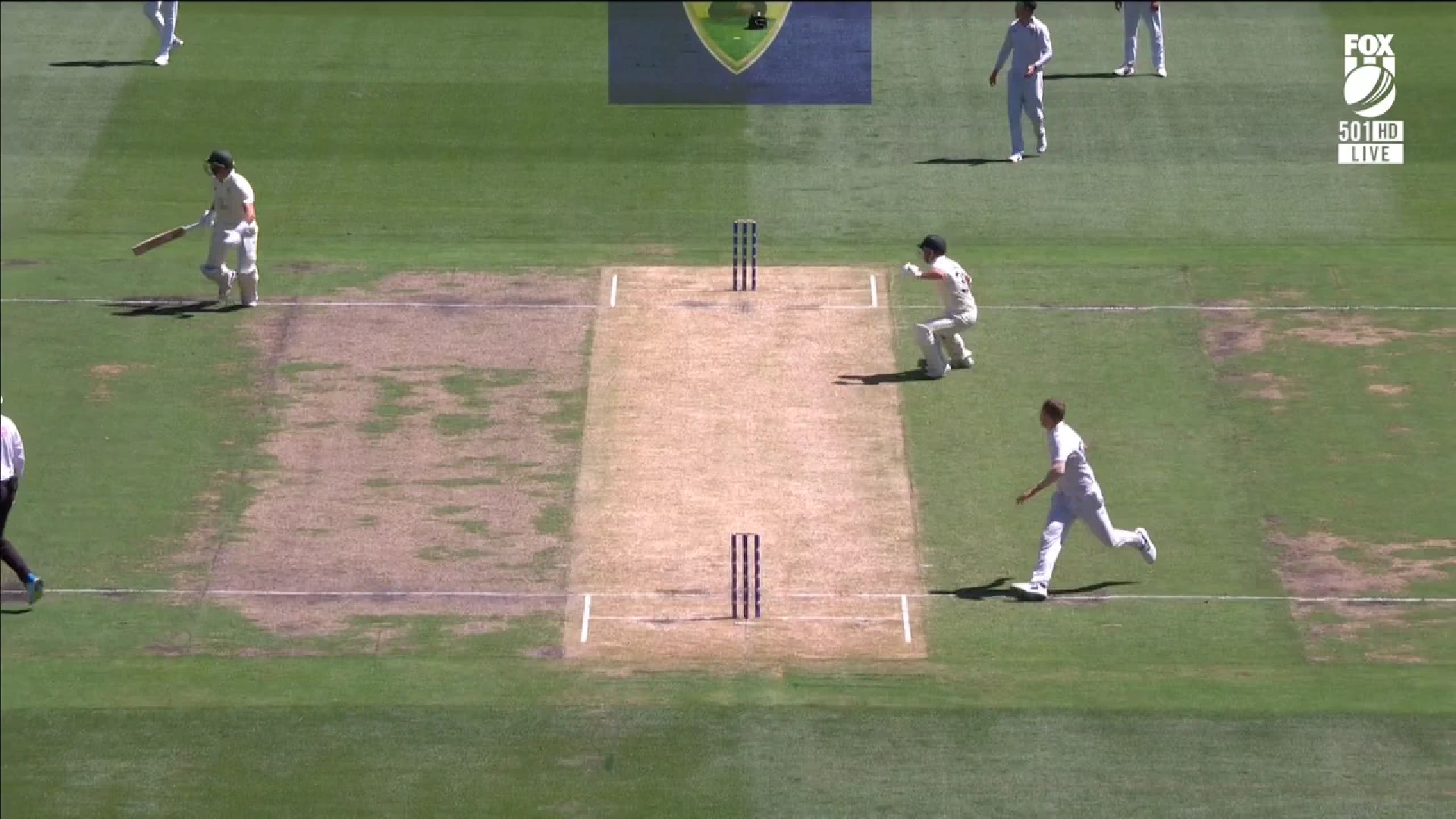
Image credit: Fox Cricket
At this point, ball-watching is useless: Marnus already knows Maharaj has the ball, that’s why he stopped in the first place. All this latest head-turn achieves is slow him down – you can see him jink again a half-second later, when it first dawns to him that he’s in serious, serious trouble.
As it eventuated, Labuschagne was only fractionally short – he was considerably closer than Dean Elgar had been when the Queenslander himself had inflicted a run out on Day 1.
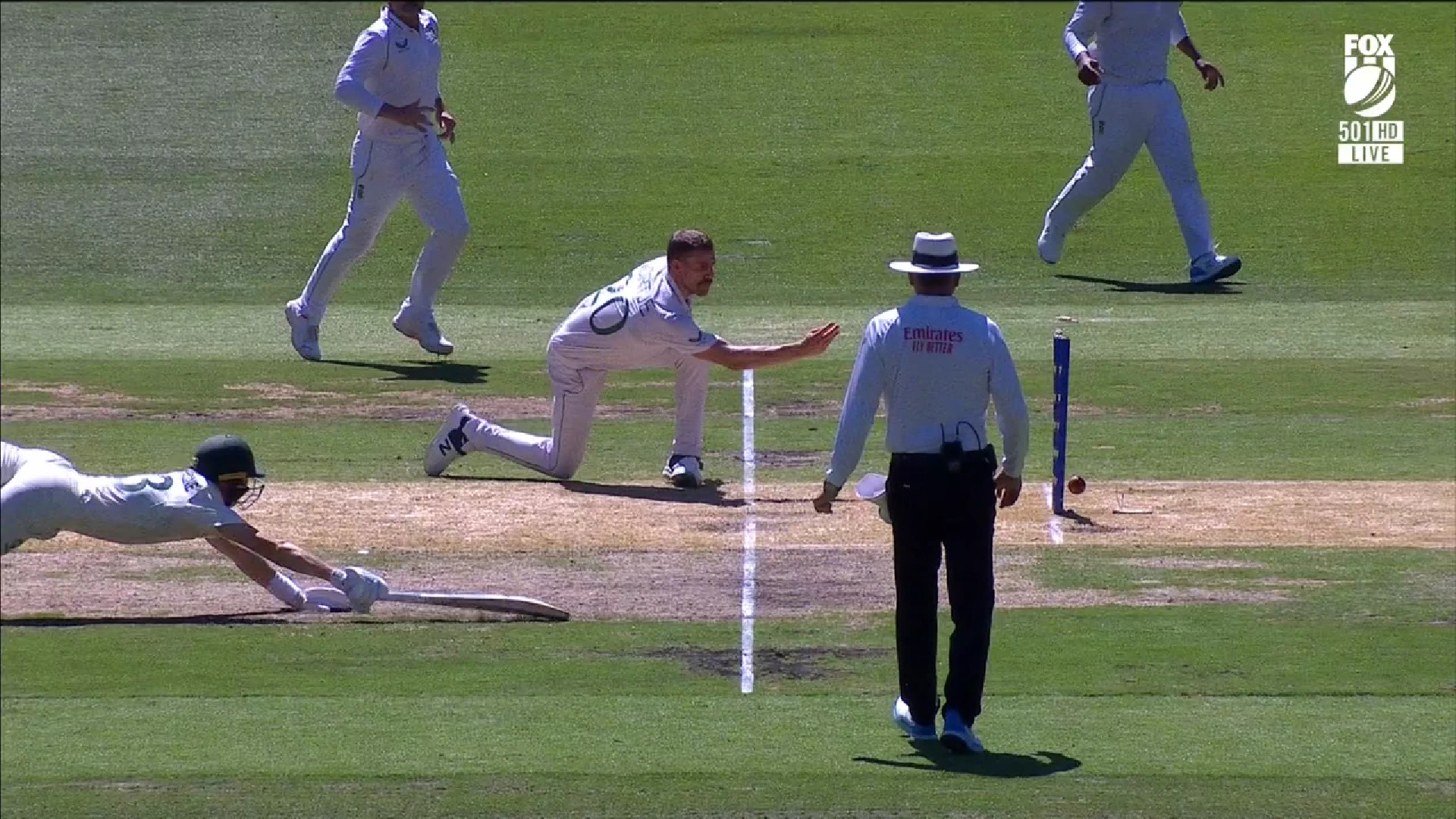
Image credit: Fox Cricket
That one extra moment of hesitation was probably the difference between him making his ground and not – and remember, thanks to it, Nortje was able to properly line up the stumps with his underarm and hit them.
Pressure can make the ball very difficult to handle, even for the simplest of run outs – remember Nathan Lyon at Headingley?
Warner was by no means blameless, but Marnus Labuschagne’s run out was certainly not his fault alone.
Labuschagne’s errors weren’t massive ones, but had he avoided them, he’d probably still be batting now.
With staff writers



































































































